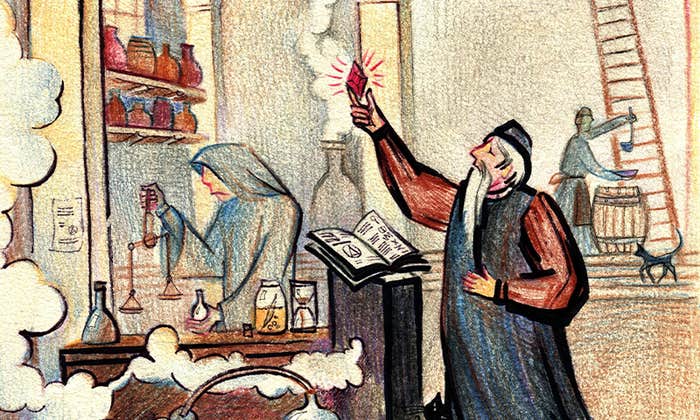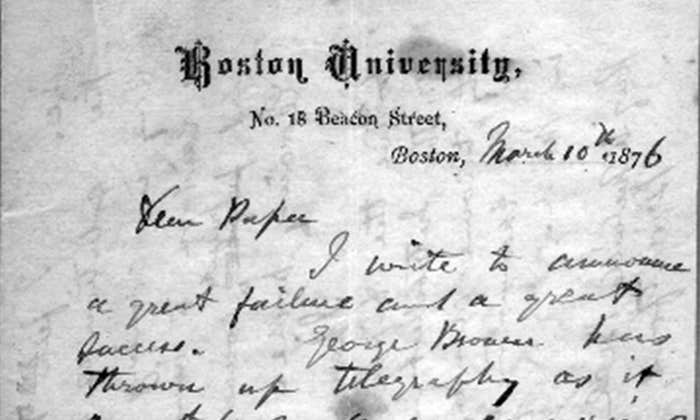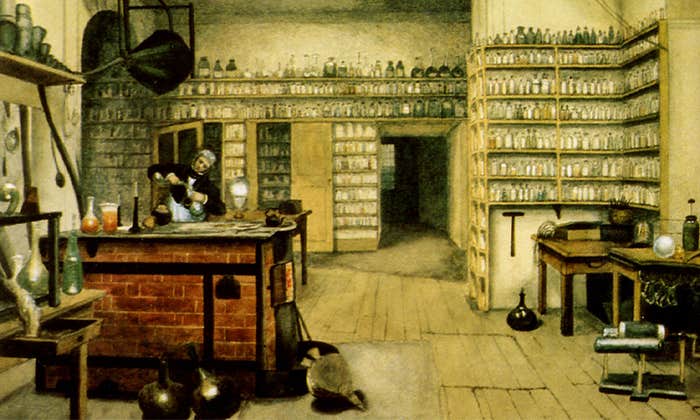The central university library at Cambridge, in the United Kingdom, is an imposing, towered building known affectionately for being called a “magnificent erection” by, before he became prime minister, Neville Chamberlain.1 When I was a graduate student there, studying astronomy, rumors circulated within my cohort that if you went to the library and asked nicely, you would be allowed to examine, under supervision, a first edition of Isaac Newton’s Principia, first published in 1687, complete with his own handwritten notes in the margins and inserted sheets.
All of which suggested a marvelous adventure. The Principia, or Philosophae Naturalis Principia Mathematica (Mathematical Principles of Natural Philosophy), has a mythological status. It was in fact three books: the first two covering the propositions and laws of motion, along with the innate attraction of all bodies to each other (gravitation), and the third being On the system of the world, in which Newton applied all of his insights to the detailed motions of the planets and their satellites, including our moon, the tidal motions, and even comets. These books laid out the quantitative foundations of classical mechanics, established the idea of gravity as a force sculpting the cosmos, and set up space and time as absolutes.
Supposedly the Principia was such an incomprehensible monster of that few could make much sense of it.
Sadly, I never quite got around to testing the rumor out for myself on the days I rode my bicycle past the library, hurrying to get out of the drizzle or morning fog. But the copy most certainly exists,2 as do at least one or two others in Cambridge that have Newton’s own post-publication additions. Part of the mythology surrounding Newton’s magnificent thesis has been the notion that neither very many copies were printed for its first edition, nor was it at first very well read, or used. That latter supposition seems to relate to the received wisdom that the Principia, written in Latin, was such an incomprehensible monster of technical detail that very few would have been able to make much sense of it. Instead, the story goes, there was a slow burn—until the early 1700s, at which point Newton’s corrected and improved later editions, along with a growing interest among scientists, began to finally have an impact.
Like many things in history, the precise origins of this myth are a little hard to pin down. But a recently published study, the result of more than a decade of work by the historians Mordechai Feingold, of Caltech, and Andrej Svorenčík, of the University of Mannheim, looks to shed light on this tale, and presents a dramatically updated narrative.3 What seems to be emerging from this new census is a picture in which Newton’s great work was actually widely, and immediately, read and discussed, perhaps even enjoyed, by both his intellectual peers and a larger population. It adds a new element to the story of how modern science developed, with more likely to come as the researchers dig deeper.
Yet the idea that some of the central texts in the development of western science were either little distributed, or little read, has a certain strange draw. This same tale of scant readership was for a long time also applied to Nicolaus Copernicus’s De revolutionibus (On the Revolutions of the Heavenly Spheres), the volume that was famously published more or less while he was on his deathbed, in the spring of 1543. It changed our view of existence by firmly removing Earth from the center of the cosmos, and by applying an inductive approach to science, where evidence came first, and hypothesis after.
The astronomer and historian of science Owen Gingerich, in his magnificent exploration The Book Nobody Read, published in 2004, went in search of answers to this puzzling contradiction: the idea that Copernicus’s work was little read and little understood, yet so influential. What he found was not only 276 first editions (a perfectly respectable number for the time) but that a wealth of copies came with the handwritten notes of their readers, many of whom represented the astronomical and intellectual movers-and-shakers of the period. Far from being a 16th-century coffee table obscurity, De revolutionibus and the proposals it contained had clearly been a critical, and well-read, reference point.
When new insights to the nature emerge, they are stress-tested by their correspondence to reality.
This kind of narrative, of the unread masterpiece, doesn’t go away though. Even with more modern texts, aimed at quite general audiences, the same sort of tales or myths seem to develop. For a while it was (and perhaps still is4) positively fashionable to admit to having a copy of Stephen Hawking’s A Brief History of Time but to have “not really read all of it.” As if that somehow conferred greater status to a book, one that explored the origins and evolution of the universe, as well as to your fortitude for at least having given the story a shot.
In Newton’s case, some of our modern interpretation of the Principia’s dispersal appears to stem from a 1953 study by Henry Macomber5 (curiously then at the Babson Institute in Massachusetts, a school focused on business and finance) that made a census of who owned the first editions. That study sided with estimates made in the late 1800s to claim that fewer than 250 copies (based on 189 actually identified ones) had ever existed. Given the well-known birthing pains of Principia itself, which took the gritted teeth and persistence of astronomer and comet-finder Edmond Halley to squeeze action out of Newton, and a variety of elitist 18th- and 19th-century anecdotes about the material’s impenetrability, it’s not hard to see how the idea of a “difficult,” little-read book took root.
Yet there had to be a rather larger print run, others have suggested, based on the obvious incompleteness that comes from only counting the copies that still exist today. To try to get to the bottom of this, Feingold and Svorenčík undertook an astonishingly systematic and exhaustive preliminary survey spanning some 27 countries and their libraries, private owners, and booksellers. The survey’s discoveries add up to 387 identified copies of the first edition of Principia, indicating a print run that was likely more in the range of 600 to 650 copies—a far cry from a couple of hundred. But the most wonderful results and insights promise to come from future analyses of who owned the books, how often they exchanged hands, and what people’s reactions were from the notes written in the pages.
It was (and perhaps still is) fashionable to admit to having a copy of Stephen Hawking’s A Brief History of Time.
The reality in all of these cases has to be that, in the end, important works do most certainly get read, or else how would we ever consider them important? But the avid readers, the marginalia scribblers, the thinkers, don’t go about telling their gossipy cocktail partners that they’re really relishing Newton, or Copernicus. Instead they’re simply busy stretching their minds, seeking insight and inspiration for their own works that will, in turn, help dilute and propagate the original breakthroughs that were—by the nature of being pioneering—awkward, dense, tricky,6 and extremely challenging.
By contrast, it’s the complainers and (to use the modern term) trolls who perhaps make the most quotable and long-lasting statements about their confusions. In Feingold and Svorenčík’s examples they describe incidents like that of the elderly mathematician and natural philosopher Gilbert Clarke, who wrote to Newton asking him to assist with understanding Principia’s contents, and complaining about why it wasn’t easier to understand; stating “you masters doe(sic) not consider the infirmities of your readers, except you intend to write only to professours or intended to have your books lie, moulding in libraries or other men to get the credit of your inventions.”7
It’s an amusing, if perhaps horrifying, thought experiment to imagine Principia showing up on Amazon today and running the gauntlet of the comment system. “Why is this thing written in Latin?” “It would help if it wasn’t so long.” “I can’t understand this, why are scientists so bad at explaining things?” “I don’t buy this idea of gravity at all, what nonsense!” Four centuries from now the historians of science would be examining terabytes of Facebook and Twitter records to try to understand whether or not anyone actually read this monumental work.
There is a deeper, and far more optimistic lesson in all of this. We are a species of information and ideas, propagating these things through time and space in our genes, brains, and externally instantiated data.8 When new insights to the nature of the world emerge, they are stress-tested by their correspondence to reality, and their reception by our spindly neurons. Science of the past 400 years is a particularly efficient and demanding sieve for what works and what doesn’t. Science also doesn’t stand isolated from the societies that have generated it. Scurrilous rumors about nobody reading certain books, or ideas that are too hard to come to grips with, are a part of that social element, and they can be seen as part of the sieve, helping distill and disperse the best of our insights.
Indeed, if you follow up on the tale of crabby old Gilbert Clarke in the 1600s, it turns out that Newton took his complaints to heart and made corrections in the second edition of Principia, based on those prompts. But we tend not to hear much about these improvements to readability. The myth of his “impossible” book actually reinforced its importance; after all, it must be really important if it’s that tough to understand.
In that sense, there is a kind of natural selection taking place for human information itself, like a bottleneck or founder effect in biological evolution. The most useful or important information tends to propagate forward, but in order to do so it may have to be squeezed and recast into better-digested pieces that can go on to populate human minds. Consequently, we feel compelled to, at first, convince ourselves that Principia or De revolutionibus were too much for most people—yet somehow the ideas stuck because they were so extraordinarily powerful.
In retrospect, my not parking my bicycle outside of the Cambridge library and going in to look at Newton’s handwritten notes wasn’t actually a gross personal failure. I already had knowledge of the Principia’s essential contents. I was a perfect example of the astonishing success of the mythology of this impossible, little-read book, its actual wide dispersal and translation, and the scientific revolution that it set in motion. At least that’s my story.
Caleb Scharf is an astrophysicist and the director of astrobiology at Columbia University in New York. His latest book is The Ascent of Information: Books, Bits, Genes, Machines, and Life’s Unending Algorithm, coming in June 2021. Follow him on Twitter @caleb_scharf.
References
1. In 1934 upon the library’s completion, prior to his becoming prime minister.
2. Newton, I. Philosophiæ Naturalis Principia Mathematica (1687). University of Cambridge Digital Library. Retrieved from: https://cudl.lib.cam.ac.uk/view/PR-ADV-B-00039-00001/9
3. Feingold, M. & Svorenčík, A. A preliminary census of copies of the first edition of Newton’s Principia (1687). Annals of Science 77, 253-348 (2020).
4. The New York Times Books. Just like you, Claire Messud never read A Brief History of Time. The New York Times (2020).
5. Macomber, H.P. A census of the owners of copies of 1687 first edition of Newton’s Principia. Papers of the Bibliographical Society of America 47, 269–300 (1953).
6. Sylla, E. Compounding ratios: Bradwardine, Oresme, and the first edition of Newton’s Principia. In Mendelsohn, E. (ed.) Transformation and Tradition in the Sciences: Essays in Honour of I. Bernard Cohen, Cambridge University Press, Cambridge (1984).
7. Newton, I. Correspondence 2:492, 501; 3:7.
8. Scharf, C. The Ascent of Information: Books, Bits, Genes, Machines, and Life’s Unending Algorithm Riverhead/Penguin Random House, New York, NY (2021).
Lead photocollage: Tasnuva Elahi. Original images: Natata / Shutterstock; Public Domain
























